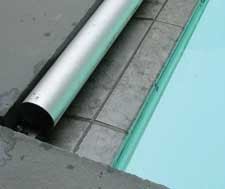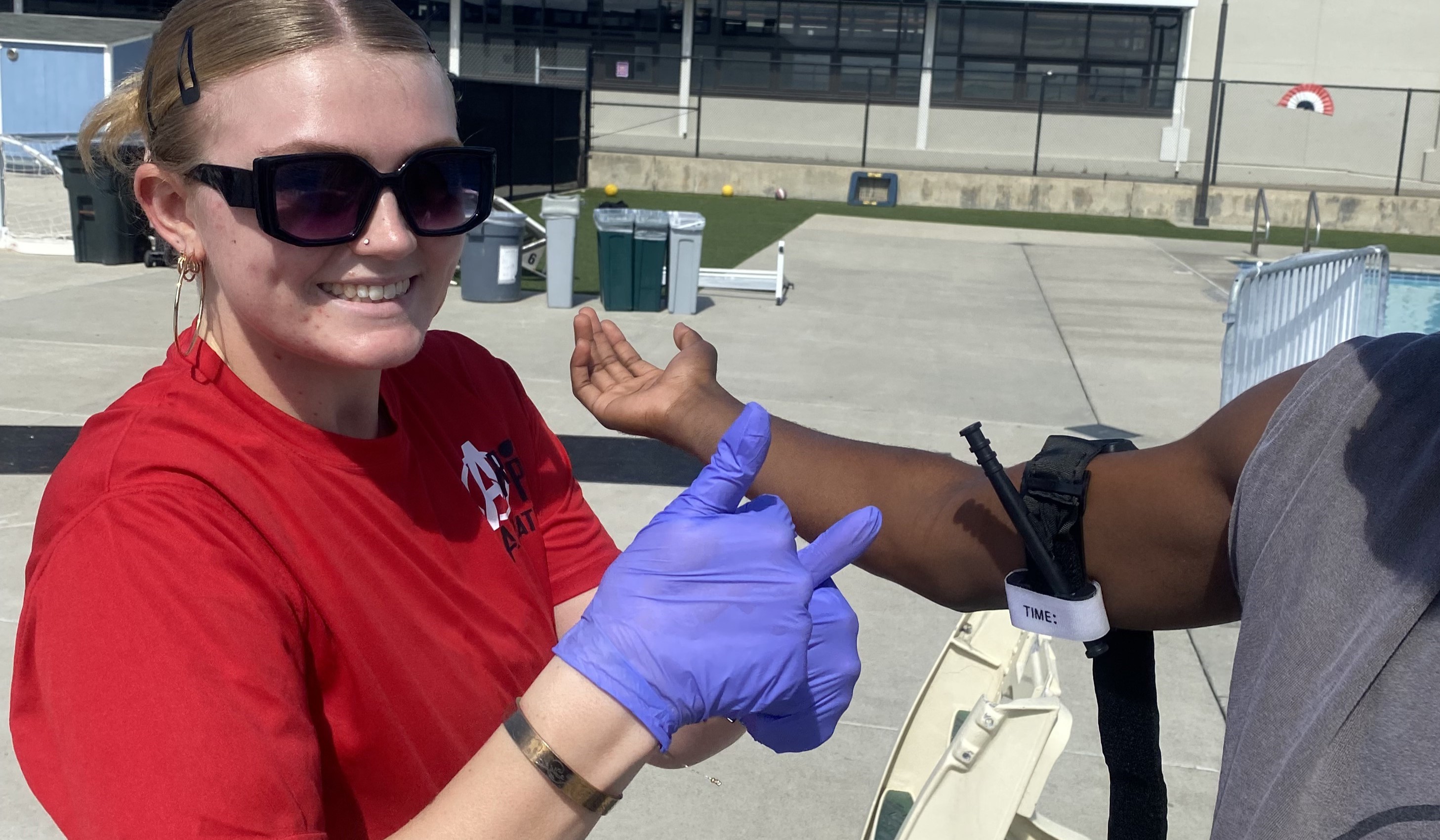When customers call in to report malfunctioning automatic pool covers, the symptoms often are the same. “It won’t run or it won’t open,” says Shannon Facey, office manager at Pools of Fun Service in Plainsfield, Ind. “It’s common, especially at the beginning of the year when someone is first opening their pool.”
Automatic covers are easy for homeowners to operate. The product also keeps pools safe and clean, and extends the life of chemicals. But more often than not, pool installation or misuse by owners will cause the covers to misalign, break or tear, cover service technicians warn.
These issues can usually be pinpointed and remedied, though. Here are four common problems and ways to help keep automatic covers running smoothly for years to come.
Cover won’t move.
One of the most common complaints lodged by pool owners is that the cover simply won’t open. “Nine out of 10 times it’s because they tripped a breaker,” Facey says.
Service technicians should check to see if the electricity needs to be reset. This usually will activate the cover again. If it does not work, the motor may need to be inspected.
A nonfunctioning motor is typically caused by drain-pit flooding. “If the drains don’t work, the pit will flood,” says Rocky Muehlbrad, president/owner of Southwest Enclosure Systems Inc. in Carrollton, Texas. Flooding usually occurs when the owner fails to clean off the cover before opening it, dumping all the debris into the pit and clogging the drains.
More recently, manufacturers have been making submersible motors that won’t break down if they get wet. But even that won’t give someone the option of soaking a motor in water, says Steve Hayner, partner at Southwest Cover Specialists in Albuquerque, N.M. “I don’t think any motor is completely submersible,” he says.
Experts recommend letting the motor dry out before attempting to work it again. If it has been dried and still doesn’t work, it probably needs to be replaced. “Motor floods decrease the life expectancy, and over time it burns out,” Muehlbrad says.
Another possibility for a stubborn automatic cover may be a broken shear pin or, for newer covers, a slipped clutch. Both are used to prevent a cover from putting pressure on the system if it malfunctions. A shear pin is designed to break if the gearing system, which engages the rope reels, has too much pressure as it works back and forth.
Sometimes the pin breaks just from normal wear and tear. But a broken pin also is a sign that something else could be problematic. “Dirt in the tracks and pulleys or forcing the cover will make the pin snap,” Hayner says. Often people try to open a cover with a lot of water on it, rather than pumping it off first.
A slipped clutch performs a function similar to that of a shear pin. But rather than breaking, it slips and prevents the cover from operating farther. A broken pin or a slipped clutch also can cause a motor to make loud grinding noises.
Sometimes a cover opens in a jerky manner. This may eventually lead to it not working at all. The culprit behind the unsteady movement is dirty tracks. To clear the tracks, Hayner says, “start at one end and flood it, and you’ll see dirt flying out of it all the way to the end where the pulley is.
Out of alignment.
If the automatic cover opens, it may not roll back evenly, which is another common complaint from customers. Uneven covers are caused by different-length ropes pulling them. To fix the problem, Muehlbrad suggests loosening or applying more brake on the rope wheels, or tying or freeing up a tension spring. This helps adjust the ropes to the wheels, so they pull on both at the same time.
Sometimes fixing a misalignment is not as easy as adjusting the ropes. Muehlbrad blames the pool design for most automatic cover misalignments. A slightly misshapen rectangular pool, for example, will cause the cover to operate irregularly.
In an underdeck system in which the tracks are mounted on a large rectangle, the pool walls need to be similar in size. “You can’t have a system that is designed to work in a purely rectangular [shape] to fit in a parallelogram or trapezoid,” Muehlbrad says.
How does that problem get fixed? The pool itself needs to be corrected, he says. Otherwise, “you’re trying to make it work in a situation that it’s not designed for.”
A pool and an automatic cover set on tracks mounted on the underside of the coping must be designed hand in hand, Muehlbrad says. Fountain sprays should not be in the way, nor should the coping’s overhang be too short. The wall of one side should not be 4 inches shorter than the other.
Tears and holes.
Automatic covers tear for any number of reasons. It’s usually due to unnecessary stress from water weight, or people walking across the surface.
Smaller rips can be repaired by applying a glue patch or some sewing without much difficulty, Hayner says. But others, depending on how the tear affects the cover’s performance, need to be sent back to the factory for repair.
Hayner’s company has five mobile sewing machines to fix tears and broken ropes on site. He suggests taking a cover to an upholsterer to have it fixed if the damage cannot be repaired on-site.
Hayner also sees a lot of holes caused by chemical damage. A lower pH level, such as 6.8 or 6.6, he says, can hurt the cover. The chemicals not only bleach the back of the cover that touches the water, but also take the elasticity out of the fabric and shorten its life.
“When you shock a pool, you must open an automatic cover for at least eight hours to do its job,” Hayner says. “It’s a high chlorine rate, but it will affect the vinyl if you leave it closed.”
Lack of knowledge.
Educating pool owners about the proper ways to maintain and operate automatic covers is the key to avoiding many problems. “Ninety percent of the time, [the installers] didn’t take time to teach the owner how to run the cover right,” Hayner says.
Experts advise instructing customers about the do’s and don’ts of automatic cover operation after installation. For example, here’s a quick checklist:
- Maintain pool water at a proper level. Low levels may prevent the cover from operating.
- Pump excess water off the cover before opening it. Extra weight may cause a strain or rips in the ropes.
- Clear debris off the pump and out of the drains. Do not flood the drain or motor damage may occur.
- Do not force an automatic cover to open if it won’t.
- Covers are not designed to be a walkway from one side of the pool to another. A cover is strong enough to withstand the weight in an emergency situation, but extra pressure may cause strain.
Service techs should check on automatic covers about twice a year. They need to make sure that the system is running smoothly and properly, the ropes aren’t frayed and the pulleys are turning. A drain should be monitored every so often “because a squirrel can put in a nest and plug it up,” Hayner says.
Installations also should be serviced for strength and durability as they age.
“A mechanism held in more solidly than another is going to operate longer and better,” Muehlbrad says.



